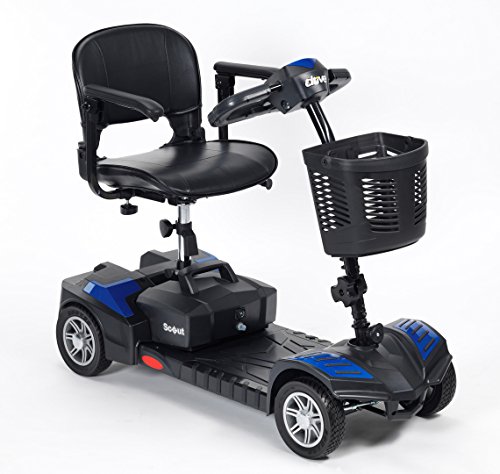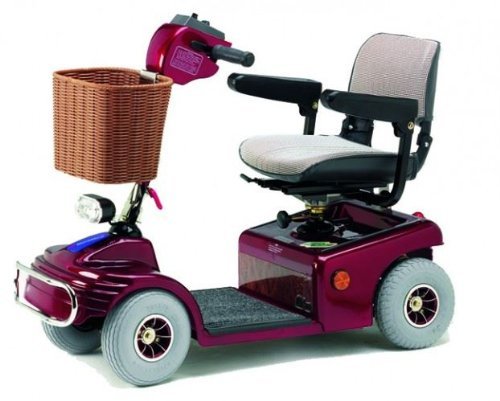Are Mobility Scooters Allowed On Pavements Tools To Improve Your Daily…
페이지 정보

본문
 Mobility Scooter Laws - Are Mobility Scooters Allowed on pavement mobility scooter with lithium battery Surfaces?
Mobility Scooter Laws - Are Mobility Scooters Allowed on pavement mobility scooter with lithium battery Surfaces?Many people who use mobility scooters are concerned that they are breaking rules and disrupting pedestrians. This is especially the case when scooters are used on pavements.
These scooters are not vehicles, and they should only be used in designated pedestrian areas such as sidewalks, pathways and walkways. Users must also follow the rules to ensure safety and compliance with local law.
Class 2
If you're using a mobility scooter on pavements, there are several things to take into consideration. Included in this are the type of mobility scooter you have as well as the local laws and regulations, as well as safety concerns. It is also essential to understand the different types and functions of the mobility scooters. This way, you will be able to choose the best scooter for your needs and stay within the law.
Class 2 scooters, also referred to as compact mobility scooters on pavements law scooters, are lightweight scooters that are designed to be used on pavements and footpaths. They typically have the maximum speed of 4mph and are not suitable for road use. These scooters are usually smaller in size and weight than other scooters, making them easier to transport and store. They also have basic controls and access to pedestrian and zebra crosswalks.
Class 2 scooters have to be able to carry a maximum weight of 150kg unladen (or 200kg if they are carrying user equipment). They must also be equipped with a front and rear light to increase visibility. They do not have to be registered with the DVLA or pay a tax on their vehicle.
Pavements are an important component of the infrastructure of the UK. However, they must be handled with care. Mobility scooters are able to be used on pavements so long they don't exceed the speed limit of 4mph, or hinder pedestrians. They should avoid cycling on routes marked 'Cycle Only' and not stop at public buildings, like supermarkets and shops.
Class 3 scooters are also permitted on the roads however they are not permitted in cycle or bus lanes. They are usually more powerful than class 2 scooters, and can travel at up to 8mph. These types of vehicles are more likely to feature road-use features such as indicators and lights.
No matter if you're driving either a class 2 or class 3, it is vital to adhere to the rules regarding the mobility scooters' use on roads and pavements. Keep a safe distance between you and other vehicles, and be cautious when turning. Be aware of pedestrians in the surrounding area and keep your eyes open for elderly and children who might not be able to be able to see you coming. You should also regularly check the condition of your scooter's batteries and tires.
Class 3
As a general rule mobility scooters in class 3 are only permitted to be driven on sidewalks and pedestrian areas. They can be used on the road when they're equipped with an amber flashing light and if the speed limit is lower than 50mph. It is not advised to drive on dual carriageways and it is crucial to not drive in bus lanes.
The rules and regulations for scooters differ across the UK. It is vital to be aware of these regulations in order to maintain your safety and the safety of others. It is essential to be aware of the different types of scooters that are available to select the one that best meets your needs.
You are not allowed to use motorized scooters on sidewalk or other pedestrian areas in the event that you are physically impaired or have a medical condition that makes walking difficult. You must also be able operate the controls of your scooter, and have a clear vision in both eyes. If you aren't sure about your ability to operate a mobility scooter, you are able to visit a store where you can try various models.
Additionally mobility scooters should always yield the right of way to other pedestrians. If you're not attentive, your scooter may be stuck in the way of other people, or it could even cause a collision. To avoid this happening, it is essential to drive your scooter at the right distance from other pedestrians.
Also, you should ensure that your scooter is outfitted with the safety features you require. These include reflective lights, functional lights, and other safety equipment. These will help you be visible to pedestrians particularly when you are in areas that are not well-lit or at night. It is also recommended to avoid using headphones or mobile phones while driving as they can cause distraction and cause accidents.
There are restrictions on the places you can park your mobility scooter, and these rules differ between urban and rural areas. If you are in a residential area it is recommended to inquire with your homeowner's associations to learn about the rules. Many communities have a minimum time limit for scooters to park. Certain communities may have specific rules about the types of scooters you can use.
Road legal
For many older adults with mobility issues the scooter can be an absolute lifesaver. It allows them to live their normal lifestyle and avoid the need to go to an assisted living facility. Some people rely on scooters as their primary form of transportation, making errands or shopping for groceries in their neighborhood. However, there are mobility Scooters allowed on pavements certain rules that must be followed when using a scooter. These rules include allowing pedestrians to pass and observing traffic laws.
The majority of the municipal laws governing motorized scooters are similar to the laws that are applicable to other vehicles. The majority of towns and cities restrict scooters' speed to 4 mph when driving on sidewalks or walkways for pedestrians. Drivers are also required to yield to pedestrians, and to exercise caution when crossing driveways and roads. Safety flags and reflective clothing is also recommended, especially when riding a scooter at night or in dimly lit places.
It is not required to register or insure mobility scooters, but they must be maintained regularly to ensure their safety. A trained technician should conduct regular maintenance, which includes an inspection complete and replacement of any worn components. They should also give you guidance on how to park and store your scooter. A scooter that is parked in the wrong location could become an accident hazard for pedestrians, and it could cause damage to your vehicle.
It's important to know that classes 2 and 3 scooters aren't road-legal. This means that they should only be used on pavements and footpaths to cross the side of the road. They are not designed to handle the speed and traffic on a road.
A qualified professional may recommend the following road safety course to scooter owners. These courses are usually provided by independent organizations or insurance companies and provide an overview of the laws, regulations, and rules related to the use mobility scooters in public spaces. These courses will make you feel confident about your ability to safely operate your scooter and navigate busy streets and sidewalks.
Legality
A mobility scooter can be an ideal way to move around and increase independence. Many people are worried about where they can legally use their scooters. Some cities have banned scooters, while others permit it with some restrictions. Although there aren't universal laws governing scooters, there are basic tips that can assist you in staying legal and safe when operating your scooter.
Before using your scooter, familiarize yourself with the local traffic laws in your area and also consult your local transportation department. These guidelines could include requirements for the scooter's design, safety features, as well as the maximum speed limits. In addition, it's essential to keep your scooter maintained regularly to ensure it's in good working order.
If your scooter is road-legal and meets the requirements, you can ride it on sidewalks, bicycle lanes, and even roads. But, don't use it on bus or motorway lanes, as this can mobility scooters go on the pavement be hazardous for you and other road users. If you decide to ride your scooter on the streets make sure that it has all the necessary lights and indicators so that other road users can see it clearly.
Making sure you are safe is the most important thing. You'll be safe from injuries and accidents. You will also feel healthier and confident. It's recommended to plan your trips in advance so that you can find an accessible parking spot. If you're unsure about the parking regulations in your city, contact the transportation department or your local advocacy group for more details.
When driving on pavements it is recommended to be cautious when driving and be courteous to pedestrians. You must be aware of any dangers or obstacles present. Wear a helmet or other protective equipment when riding your scooter on the road or sidewalk.
 Another tip is to exercise regularly to improve your balance and coordination. This will help you stay safe while riding your scooter and can even help prevent injuries and accidents. Additionally, you should mobility scooters be on the pavement follow the advice of your physician regarding physical exercise.
Another tip is to exercise regularly to improve your balance and coordination. This will help you stay safe while riding your scooter and can even help prevent injuries and accidents. Additionally, you should mobility scooters be on the pavement follow the advice of your physician regarding physical exercise.- 이전글What NOT To Do In The Door Doctor Near Me Industry 24.09.04
- 다음글10 Things That Your Family Teach You About Stove Fire Electric 24.09.04
댓글목록
등록된 댓글이 없습니다.

